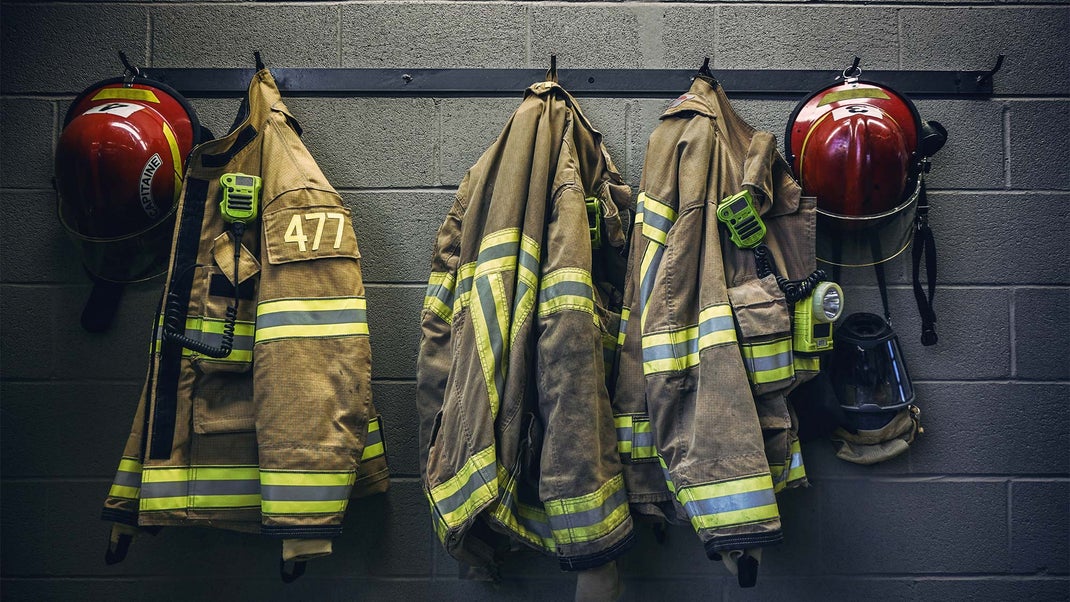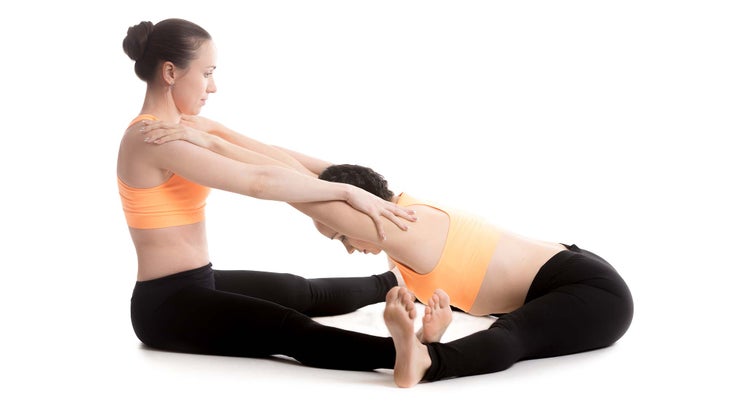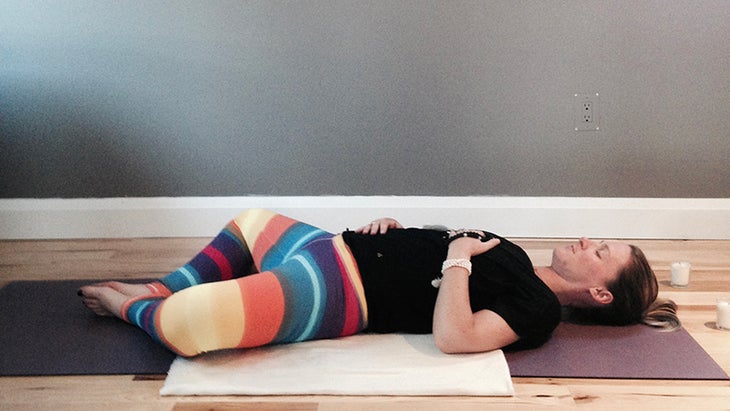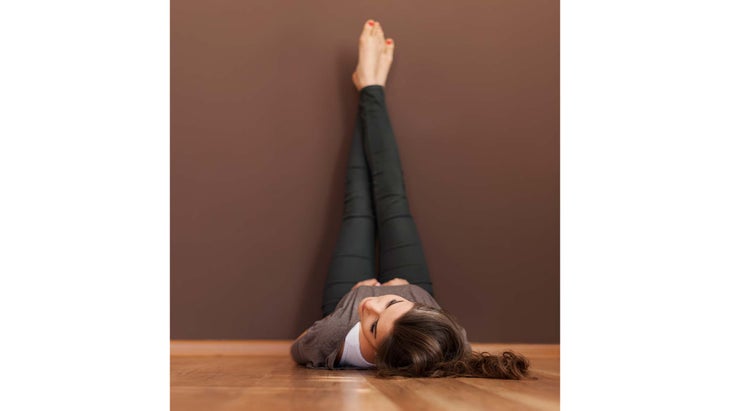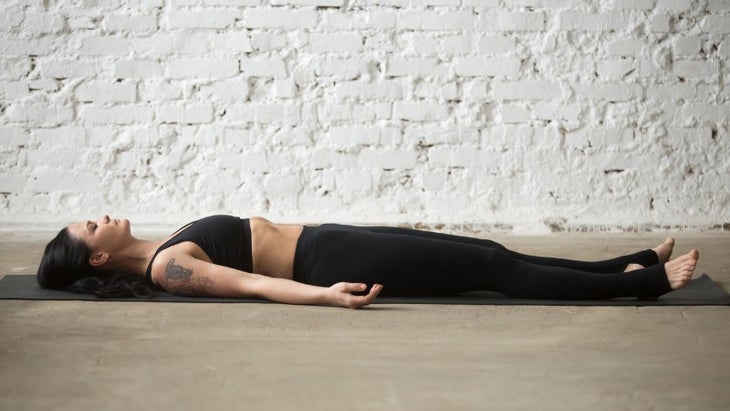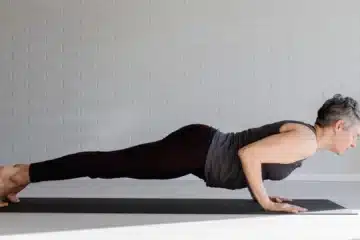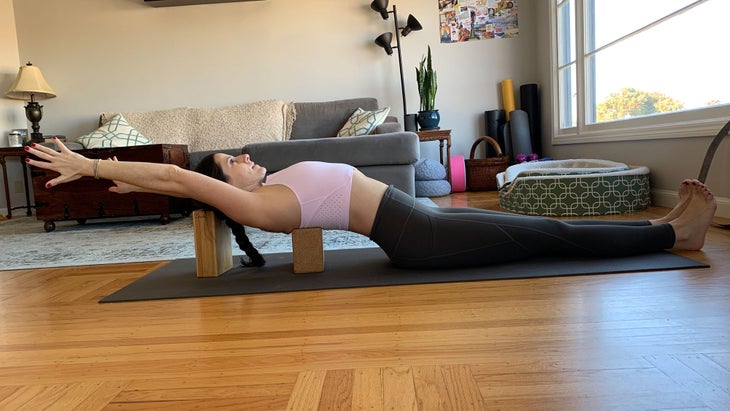When I first started teaching yoga to firefighters 3 years ago, I had no idea what I was getting myself into. Yoga is a form of exercise that has been around for thousands of years and it’s not just about the physical benefits. It can also have many mental health benefits too! However, when you are telling people in one of the busiest cities in the world how to do this ancient fitness regimen, you need to know 3 lessons well.
It’s a Monday afternoon and I’m standing—alone—in the yoga studio, having already set up mats, blocks, and meditation cushions. The only thing missing: students. It’s my first time teaching a class to New York City firefighters via Friends of Firefighters, a non-profit organization that provides wellness services such as counseling and yoga to active and retired Fire Department of New York (FDNY) members and their families, and I’m a little nervous that no one will show up.
No one does—this time. But fast forward a few weeks and I have a regular group of students who are eager to tell me what’s going on with their bodies and even request specific poses. That slow first month was well over a year ago, when I first began teaching yoga classes to firefighters.
More firefighters are turning to yoga to balance the extreme highs and lows they face on a daily basis, as well as to improve their strength, flexibility, and focus—something their jobs demand. It also helps them tackle common trouble spots (think hamstrings, back, neck, and hip flexors), which can be tight or sore due to the weight of the gear firefighters have to carry, the tools they use, and the physically demanding nature of spending 24-hour shifts battling flames and responding to emergencies.
I had the idea to teach yoga to New York City firefighters after noticing the majority of my friends working as first responders had similarities in physical aches and pains, as well as difficulties managing stress. After an intense disagreement with my firefighter ex-boyfriend, it occurred to me that his emotionally charged behavior actually had nothing to do with me; rather, it stemmed from his inability to process the baggage, stress, and trauma of his career.
I connected with Friends of Firefighters via social media to present my idea to teach a class in Manhattan (they already offered one in Queens). Fortunately, we were able to collaborate, and now my Yoga for the FDNY class takes place free of charge every Monday afternoon at Lululemon’s Hub Seventeen, which generously donates space, mats, and props for the 90-minute class.
Here are 3 lessons I’ve learned teaching this brave, hard-working population of students—plus 5 poses that help them relax and recharge, and will hopefully help you do the same.
3 Lessons I’ve Learned Teaching Yoga to NYC Firefighters
Lesson 1: Breathwork helps firefighters balance the highs and the lows of their jobs.
Dramatic fluctuations in adrenaline and the nervous system are a fact of life for firefighters, and a sudden, extreme surge in stress hormones can occur in mere seconds. However, after the sympathetic nervous system onslaught that happens when firefighters are called to action, there’s a parasympathetic crash that follows, which can leave firefighters feeling exhausted, apathetic, and even irritable. This is where the importance of breathing becomes crucial: Proper and focused breathwork bridges the connection between mind and body, slows the body’s physical reactivity, and calms the mind.
What’s more, proper breathing can mean life or death when on a call. Firefighters use a mask and a Scott Air-Pak for their air supply during a blaze; these units only contain a certain amount of air. This means the ability to regulate and control proper breathing can help ensure they have as much oxygen as they need—and that heavy, stressed-out breathing doesn’t jeopardize their supply. This is why I usually begin class asking my students to keep their eyes closed while lying down, and to notice the rise and fall of the body. Each inhale brings in new air, creating expansion; and each exhale is another opportunity to release and let go of tension, tightness, and stress.
Lesson 2: Humor lightens the mood.
I quickly learned to adapt to this very specific student population by shifting my “traditional” teaching approach in favor of a more relaxed, humorous one. In class, for example, I tend to stick with English names for poses rather than Sanskrit. I avoid any “hippie” add-ons such as incense or spiritual mentions (I was nearly laughed right out of the room the one time I referenced the monkey god Hanuman). And humor, even my cheesy jokes, can usually get them to smile even as they’re suffering in that full split. (Surprisingly, Hanumanasana is one of their most frequently requested poses. Our version incorporates the use of several blocks, cushions, and blankets to support their tight hips, hamstrings, Achilles tendons, and heels.) If all else fails to make them laugh, I’ll usually remind them to force their faces to relax by smiling, because grimacing isn’t going to make a pose easier.
Lesson 3: Flexibility and focus help them perform better on the job.
In an intense environment where seconds can be crucial, agility and concentration are hugely important. Yoga helps firefighters increase their flexibility, which can help them handle the physical demands of the job while also preventing potential injuries and alleviating pain. Some students aren’t even aware of their aches and pains until they practice certain poses and mindfulness techniques. “I owe my successful recuperation from back surgery to yoga,” one of my students, Lieutenant Firefighter Dan (Daniel) Gardner, told me recently. “My favorite part about yoga is how it creates an awareness of my body, posture, and alignment, right down to individual muscles and joints.”
Yoga also teaches firefighters to be present and mindful, which gives them the focus they need on the job. “I’ve been [practicing yoga] consistently for a year, and my flexibility and balance have drastically improved,” says one of my “regulars,” firefighter Chuck (Chukwudi) Maduakolam. “I’m also able to focus better while doing physically demanding tasks [at work].”
Here are some of the poses I teach my firefighter students to help them relax and recover, both physically and mentally.
5 Poses That Help Firefighters Relax and Recharge
1. Wide-Angle Seated Forward Bend with a Partner (Upavistha Konasana)
This pose elongates the hamstrings, spine, and neck, and works on the hip flexors—all common trouble spots for firefighters.
How-to: Sit facing your partner with the soles of your feet and/or ankles touching (working with a partner deepens the intensity). Grasp your partner’s forearms as they hinge forward at the hips.
2. Reclining Bound Angle Pose (Supta Baddha Konasana)
This pose opens the hip flexors and allows both the mind and body to relax.
How-to: Close your eyes, allow your palms to face upward, with the soles of the feet pressing against one another in order to open up the hips by moving the knees apart. (Feel free to use props, such as meditation cushions or blocks, under the knees. This allows your back body to feel supported as your front body begins to open up and expand.) Notice how your muscles relax as your focus turns toward the act of simply inhaling and exhaling.
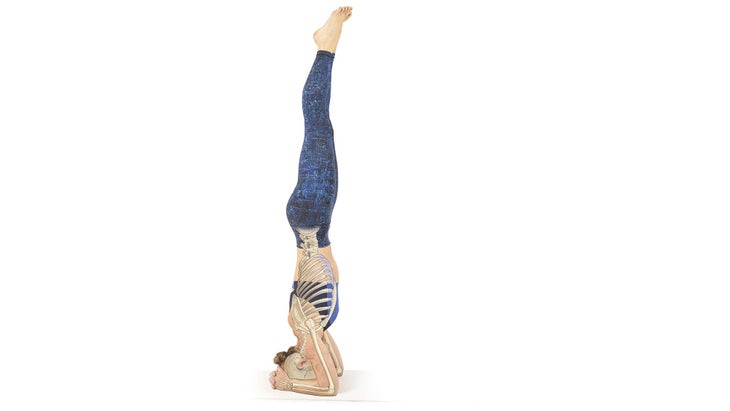
3. Headstand (Salamba Sirsasana)
Inversions stimulate the pineal gland, aka the command center of the brain. They also alleviate pressure on the legs and help to calm the nervous system.
How-to: We typically practice Headstand using two stacks of blocks underneath the shoulders to eliminate any compression or pressure on the head and neck.
4. Legs-Up-the-Wall Pose (Viparita Karani)
This pose is ideal for calming the nervous system. The support of the wall for the legs and the ground for the back allows the body to remain inverted without having to rely on muscular strength or physical effort.
How-to: Close your eyes and face your palms upward, allowing the front body to be open and expansive while the back body is supported. See the full pose instructions here.
5. Corpse Pose (Savasana)
This final resting pose is an opportunity to be still, present, and connected with your breath. Focusing on the moment and observing without reacting is essential for creating mental clarity, relaxation, and ease.
How-to: Lie down on your back with all limbs splayed open and apart, toes pointing away from one another, and palms resting upward. Allow the entire back body to rest against the support of the earth below you, and notice how your muscles fully relax as if they are melting. Keep your eyes closed; the only movement in your body should be the subtle rise and fall of each inhalation and exhalation. Observe any changes that have occurred during your practice—whether physical, mental, or energetic—without judgment. This newfound space and expansiveness, along with the act of breathing, is always available within us, even when there’s a (literal or figurative) fire to put out.
Conclusion:
3 Lessons I’ve Learned Teaching Yoga to NYC Firefighters
Here are some of the poses I teach my firefighter students to help them relax and recover, both physically and mentally. 3 Poses That Help Firefighters Relax and Recharge: Wide-Angle Seated Forward Bend with a Partner (Upavistha Konasana), Legs-Up-the-Wall Pose (Viparita Karani), and Corpse Pose (Svanasana). 3. Conclusion: 3 Lessons I’ve Learned Teaching Yoga to NYC Firefighters Here are some of the poses I teach my firefighter students to help them relax and recover, both physically and mentally.
